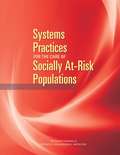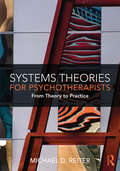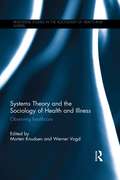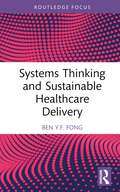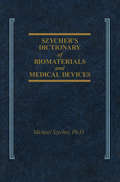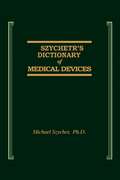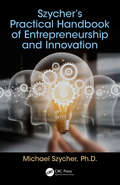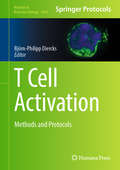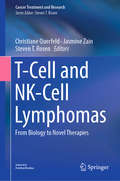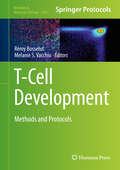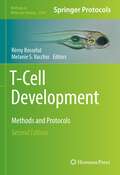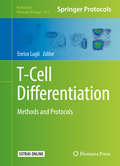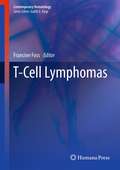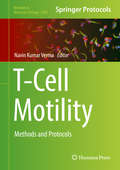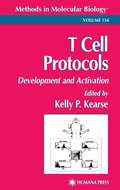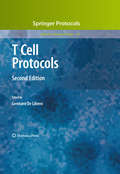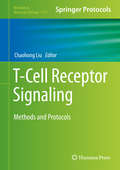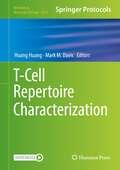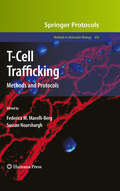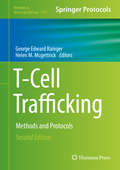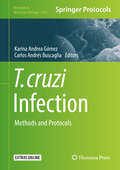- Table View
- List View
Systems Practices for the Care of Socially At-Risk Populations
by National Academies of Sciences Engineering MedicineThe Centers for Medicare & Medicaid Services (CMS) have been moving from volume-based, fee-for-service payment to value-based payment (VBP), which aims to improve health care quality, health outcomes, and patient care experiences, while also controlling costs. Since the passage of the Patient Protection and Affordable Care Act of 2010, CMS has implemented a variety of VBP strategies, including incentive programs and risk-based alternative payment models. Early evidence from these programs raised concerns about potential unintended consequences for health equity. Specifically, emerging evidence suggests that providers disproportionately serving patients with social risk factors for poor health outcomes (e.g., individuals with low socioeconomic position, racial and ethnic minorities, gender and sexual minorities, socially isolated persons, and individuals residing in disadvantaged neighborhoods) may be more likely to fare poorly on quality rankings and to receive financial penalties, and less likely to receive financial rewards. The drivers of these disparities are poorly understood, and differences in interpretation have led to divergent concerns about the potential effect of VBP on health equity. Some suggest that underlying differences in patient characteristics that are out of the control of providers lead to differences in health outcomes. At the same time, others are concerned that differences in outcomes between providers serving socially at-risk populations and providers serving the general population reflect disparities in the provision of health care. Systems Practices for the Care of Socially At-Risk Populations seeks to better distinguish the drivers of variations in performance among providers disproportionately serving socially at-risk populations and identifies methods to account for social risk factors in Medicare payment programs. This report identifies best practices of high-performing hospitals, health plans, and other providers that serve disproportionately higher shares of socioeconomically disadvantaged populations and compares those best practices of low-performing providers serving similar patient populations. It is the second in a series of five brief reports that aim to inform the Office of the Assistant Secretary of Planning and Evaluation (ASPE) analyses that account for social risk factors in Medicare payment programs mandated through the Improving Medicare Post-Acute Care Transformation (IMPACT) Act.
Systems Theories for Psychotherapists: From Theory to Practice
by Michael D. Reiter<p><i>Systems Theories for Psychotherapists</i> explores three key theories that underpin many of the models of psychotherapy: general systems theory, natural systems theory, and language systems theory. The book presents the aesthetics (how to see and understand what is happening) and the pragmatics (what to do in the therapy room) behind each theory. It also explores how therapists can successfully conceptualize the problems that clients bring to therapy, offering a range of contemporary examples to show how each theory can be applied to practice. <p>Starting with an introduction to systems theories, the book then delves into cybernetics, interactional systems, natural systems, constructivist theory, and social construction theory. Each chapter uses a distinctive case example to help clinicians to better understand and apply the theories to their own therapeutic setting. Woven throughout the book are three helpful learning tools: "Applying Your Knowledge," "Key Figure," and "Questions for Reflection," providing the reader with the opportunity to critically engage with each concept, consider how their own world view and preconceptions can inform their work with clients, and challenging them to apply prominent systems theories to their own practice. <p><i>Systems Theories for Psychotherapists</i> is a clear and valuable text for undergraduate and graduate students in mental health programs, including counseling, marriage and family therapy, social work and clinical psychology, as well as for all practicing clinicians.</p>
Systems Theory and the Sociology of Health and Illness: Observing Healthcare
by Morten Knudsen Werner VogdModern societies and organizations are characterized by multiple kinds of observations, systems, or rationalities, rather than singular identities and clear hierarchies. This holds true for healthcare where we find a range of different perspectives – from medicine to education, from science to law, from religion to politics – brought together in different types of arrangements. This innovative volume explores how this polycontexturality plays out in the healthcare arena. Drawing on systems theory, and Luhmann’s theory of social systems as communicative systems in particular, the contributors investigate how things – drugs, for example – and bodies are observed and constructed in different ways under polycontextural conditions. They explore how the different types of communication and observation are brought into workable arrangements – without becoming identical or reconciled – and discuss how health care organizations observe their own polycontexturality. Providing an analysis of healthcare structures that is up to speed with the complexity of healthcare today, this book shows how society and its organizations simultaneously manage contexts that do not fit together. It is an important work for those with an interest in health and illness, social theory, Niklas Luhmann, organizations and systems theory from a range of backgrounds including sociology, health studies, political science and management.
Systems Thinking and Sustainable Healthcare Delivery (Routledge Focus on Business and Management)
by Ben Y.F. FongThe Sustainable Development Goal 3 seeks to ensure health and well-being for all at every stage of life. This book discusses how to strengthen our healthcare systems and ensure sustainable community healthcare delivery by using systems thinking, an approach to understanding complex interactions of individual system elements in nature. Financing and manpower planning are integral processes to achieve health for all in the world. Adopting the Framework for Action of the World Health Organization for Strengthening Health Systems to Improve Health Outcomes, this book reviews and discusses, illustrated by case examples, the building blocks of healthcare systems, namely financing, human resources, management strategies and leadership and governance in the context of accessibility, coverage, quality and safety of community health services to achieve selected targets in SDG 3 in the context of global health. This book will be of interest to those who are researching sustainable healthcare systems, as well as policymakers and healthcare professionals.
Szycher's Dictionary of Biomaterials and Medical Devices
by Michael SzycherThis dictionary contains thousands of definitions from various related disciplines and minimizes the need for several dictionaries. The book defines everything from AAMI (Association for the Advancement of Medical Instrumentation) to zymogen (proenzyme). The editor, an internationally recognized expert in the area of biomaterials, has combined knowledge from the fields of medicine, pharmacology, physiology, polymer chemistry, biochemistry, metallurgy, and organic chemistry.
Szycher's Dictionary of Medical Devices
by Michael SzycherFROM THE PREFACEThe field of medical devices represents one of the most advanced technological areas in the United States. In 1991, over 12 million Americans had at least one medical device; fixation devices had the highest incidence, followed by contact lens use and lens implants and, lastly, artificial joints. The public has come to expect that medical devices will alleviate maladies and/or conditions that were not treatable fifty years ago. It is hard to believe that the first pacemaker was invented in the 1950s, the first artificial heart valve in 1952, and the first artificial hip replacement was performed in 1954. In 1992, the medical device industry exported a total of $6.9 billion, while the country imported a total of $3.9 billion, representing a $3.0 billion trade surplus. Medical devices are among the most regulated products in the world. The FDA maintains a constant vigil over medical device manufacturers and importers; even medical device definitions are subject to official scrutiny. Title 21 of the Code of Federal Regulations publishes these definitions, but the definitions are spread over several medical specialty areas and are, thus, difficult to find. This book attempts to bring a measure of order by providing an alphabetical listing of officially defined devices.
Szycher's Handbook of Polyurethanes
by Michael SzycherA practical handbook rather than merely a chemistry reference, Szycher's Handbook of Polyurethanes, Second Edition offers an easy-to-follow compilation of crucial new information on polyurethane technology, which is irreplaceable in a wide range of applications. This new edition of a bestseller is an invaluable reference for technologists, marketer
Szycher’s Practical Handbook of Entrepreneurship and Innovation
by Michael SzycherThis practical and comprehensive handbook offers step-by-step instruction, guiding entrepreneurs of innovative technology startups all the way from idea to profitability. With its easy-to-follow format aimed at both experienced as well as novice entrepreneurs, this book covers all technical, financial, legal, and governmental hurdles facing startups. It discusses common causes of business failure and points out the pitfalls to avoid in getting innovative technology successfully to market.
T Cell Activation: Methods and Protocols (Methods in Molecular Biology #2904)
by Björn-Philipp DiercksThis volume provides detailed, up-to-date methods used in basic and applied research on T-cell activation. Chapters explore the fundamentals in T-cell biology a board range cutting-edge techniques from initial Ca2+ live-cell imaging to downstream effector functions in autoimmune disease. Written in the format of the highly successful Methods in Molecular Biology series, each chapter includes an introduction to the topic, lists necessary materials and reagents, includes tips on troubleshooting and known pitfalls, and step-by-step, readily reproducible protocols. Authoritative and cutting-edge, T- cell activation: Methods and Protocols will be an indispensable protocol collection for researchers studying T-cell activation in inflammation and immunity.
T-Cell and NK-Cell Lymphomas: From Biology to Novel Therapies (Cancer Treatment and Research #176)
by Christiane Querfeld Jasmine Zain Steven T. RosenIn this book, a group of internationally distinguished lymphoma experts provide a comprehensive review of the most important advances in the biology, diagnosis, and therapy of T cell and NK cell malignancies. In particular, it demonstrates in detail how advances in our understanding of the tumor microenvironment and molecular biology have helped to elucidate the pathogenesis of these lymphomas, improve diagnostic and prognostic accuracy, and develop novel therapies that promise improved patient outcomes. Individual chapters are devoted to particular tumor types and subtypes, and all aspects of transplantation for patients with T cell and NK cell lymphomas are discussed. As such, the book offers a valuable resource for hematologists, oncologists, hematopathologists, and all those seeking an up-to-date overview of how new, targeted therapies are delivering better disease control and improved quality of life.
T-Cell Development
by Rémy Bosselut Melanie S. VacchioThis volume provides simple and accessible experiment protocols to explore thymus biology. T-Cell Development: Methods and Protocols is divided into three parts presenting short reviews on T cell development, analysis strategies, protocols for cell preparation, flow cytometry analyses, and multiple aspects of thymocyte biology. As a volume in the highly successful Methods in Molecular Biology series, chapters contain introductions to their respective topics, lists of the necessary materials and reagents, step-by-step, readily reproducible protocols, and tips on troubleshooting and avoiding known pitfalls. Concise and easy-to-use, T-Cell Development: Methods and Protocols aims to ensure successful results in the further study of this vital field.
T-Cell Development: Methods and Protocols (Methods in Molecular Biology #2580)
by Rémy Bosselut Melanie S. VacchioThis second edition volume provides new and updated chapters detailing simple and accessible experiment protocols to explore thymus biology. Chapters are divided into three parts presenting short reviews, analysis strategies, protocols for cell preparation, flow cytometry analyses, Innate Lymphoid Cells (ILC), mouse T-cell development, antigen receptor-less cousins of T cells, bone marrow chimeras, thymic stroma, and multiple aspects of thymocyte biology. Written in the successful Methods in Molecular Biology series format, chapters include introductions to their respective topics, lists of the necessary materials and reagents, step-by-step, readily reproducible protocols, and notes on troubleshooting and avoiding known pitfalls. Authoritative and cutting-edge, T-Cell Development: Methods and Protocols, Second Edition aims to be a useful practical guide to help readers overcome obstacles associated with experimental approaches of T-cell development.
T-Cell Differentiation
by Enrico LugliThis volume provides protocols to successfully apply cutting-edge technologies to characterize the biology of T cells at an unprecedented level of complexity. Chapters guide readers through flow cytometry and fluorescence-activated cell sorting, the behaviour of single T cells after adoptive cell transfer (ACT), single cell gene expression by multiplex PCR, lentiviral transduction approaches, protocols to derive large numbers of early-differentiated memory T cells by using dedicated cytokines cocktails, approaches to measure telomerase activity in terminally differentiated T cells, and approaches to define Treg cells at the phenotypic and functional level. The final part of the book is dedicated to the analysis of the differentiation and effector functions of innate T cells, namely the well-known γ/δ T cells, and the recently identified CD8+ mucosal associated invariant T (MAIT) cells. Written in the highly successful Methods in Molecular Biology series format, chapters include introductions to their respective topics, lists of the necessary materials and reagents, step-by-step, readily reproducible laboratory protocols, and tips on troubleshooting and avoiding known pitfalls. Authoritative and cutting-edge, T-Cell Differentiation: Methods and Protocols aims to provide protocols that are fundamental to monitor the T cell compartment at the level of single cells in pathological and immunotherapy conditions.
T-Cell Lymphomas
by Francine FossThe mature T and NK cell lymphomas are rare, comprising approximately 10% of all malignant lymphomas. The incidence of T-cell lymphoma is variable around the world, with a higher incidence compared to B-cell lymphomas in the Asian basin. While the overall incidence of B-cell lymphomas has begun to decline in the United States, the incidence of T-cell lymphomas continues to rise. Over the last decade, a number of novel agents have been developed which target T-cell lymphomas and studies have identified novel genes and pathways associated with lymphomagenesis in T-cells. This comprehensive volume examines the clinical and biological aspects of the T-cell lymphoproliferative disorders in adults and children. The book includes an overview of both the cutaneous and the systemic T-cell malignancies and addresses the classification of T-cell lymphomas, the clinical features of each subtype, and the relevant molecular and genetic studies. Clinical outcomes and treatment strategies are discussed with an emphasis on the development of novel biological and targeted therapies. An outstanding resource for hematologists and oncologists, this book gathers insights from experts in the field and provides the most up-to-date information on all of the T-cell lymphoma subgroups and current and emerging therapies.
T-Cell Motility: Methods and Protocols (Methods in Molecular Biology #1930)
by Navin Kumar VermaThis volume discusses the latest developments in cellular, molecular, biochemical, and imaging assays to study the biology and functions of T-cells. The chapters in this book cover topics such as LFA-1/ICAM-1 interactions in T-cell motility; using 3D-SIM to dissect signaling cross-talks in motile T-cells; GapmeR-mediated gene silencing in motile T-cells; activity of cellular kinases in migrating T-cells; and computational analysis of protein-protein interactions in motile T-cells. Written in the highly successful Methods in Molecular Biology series format, chapters include introductions to their respective topics, lists of the necessary materials and reagents, step-by-step, readily reproducible laboratory protocols, and tips on troubleshooting and avoiding known pitfalls.Cutting-edge and comprehensive, T-Cell Motility: Methods and Protocols is an essential resource for graduate students, postdoctoral fellows, and principal investigators working in the fields of immunology, T-cell biology, biochemistry, molecular biology, and imaging.
T Cell Protocols
by Kelly P. KearseKelly P. Kearse and a panel of laboratory experts describe the step-by-step execution of a wide variety of basic and specialized techniques for the study of T cell developmental biology and of their subsequent activation. Readily reproducible, the techniques are explained concisely, but in such detail that they are suitable for both the novice and experienced investigator. Coverage includes treatment of both fundamental and novel experimental protocols for the analysis of the role T cells play in immune function and in the prevention and cure of human diseases. Practical and timely, T Cell Protocols: Development and Activation offers basic scientists and clinical investigators a valuable compendium of key protocols that will improve skills with existing methods, as well as afford rapid mastery of powerful new techniques.
T Cell Protocols
by Gennaro De LiberoWith a wide variety of investigative approaches, T cell immunology is a vital and open field of study. In T Cell Protocols, Second Edition, an international panel of experts contribute fully updated classic protocols as well as newly established novel techniques for the study of T lymphocyte biology. Written in the highly successful Methods in Molecular BiologyTM series format, the chapters in this volume provide brief introductions to the topics, lists of the necessary materials and reagents, step-by-step, readily reproducible laboratory protocols, and Notes sections which collect expert tips on troubleshooting and avoiding known pitfalls. Up-to-date and easy to use, T Cell Protocols, Second Edition is an ideal guide for young investigators new to the complex field of immunology as well as a valuable, concise resource for experienced scientists searching for clear, efficacious descriptions of novel methods.
T-Cell Receptor Signaling: Methods and Protocols (Methods in Molecular Biology #2111)
by Chaohong LiuThis volume provides current and new advanced methods and protocols to study T cells. Chapters guide readers through T cell diversity using mass cytometry, analyzing T cells from single cell level, CRISPR/Cas9 techniques to study the T cell activation, techniques to study subsets of Tcell’s, procedures to study artificial antigen presentosomes for T cell activation, techniques to study the T cell development, two-photon microscopy, and MAIT cells. Written in the highly successful Methods in Molecular Biology series format, chapters include introductions to their respective topics, lists of the necessary materials and reagents, step-by-step, readily reproducible laboratory protocols, and tips on troubleshooting and avoiding known pitfalls. Authoritative and cutting-edge, T-Cell Receptor Signaling: Methods and Protocols aims to provide a wide range of approaches and be an invaluable resource for present and future generations of T cell researchers.
T-Cell Repertoire Characterization (Methods in Molecular Biology #2574)
by Huang Huang Mark M. DavisThis volume provides a comprehensive compilation of protocols in T cell repertoire analysis, from the leading experts in the field, representing both well-established methods and cutting-edge advances. Chapters broadly cover the emerging new T cell subsets, sequencing technologies for capturing TCR repertoire, and computational tools for analyzing an ever-growing TCR repertoire, with a particular focus on how to link the sequence with TCR antigen specificity. Written in the successful Methods in Molecular Biology series format, chapters include introductions to their respective topics, lists of the necessary materials and reagents, step-by-step, readily reproducible protocols, and notes on troubleshooting and avoiding known pitfalls. Authoritative and cutting-edge, T-Cell Repertoire Characterization aims to be a useful practical guide to researches to help further their study in this field.
T-Cell Trafficking
by Federica M. Marelli-Berg Sussan NoursharghIn the last decade, a large number of major discoveries have shed light on the molecular mechanisms of lymphocyte migration and the anatomy of immune responses. In T-Cell Trafficking: Methods and Protocols, expert researchers explore how the development of novel and cutting-edge techniques, particularly in the field of real-time imaging and genetic manipulation, have led to an increased understanding of lymphocyte trafficking. Written by internationally recognized experts in their respective fields, chapters provide state-of-the-art protocols to study lymphocyte migration and T-cell: endothelial cell interactions in vitro, address various approaches used for direct visualization of the development of the lymphoid system, lymphocyte recirculation, and effector responses in experimental models in vivo, and explore lymphocyte migration and inflammation in the human system. Composed in the highly successful Methods in Molecular BiologyTM series format, each chapter contains a brief introduction, step-by-step methods, a list of necessary materials, and a Notes section which shares tips on troubleshooting and avoiding known pitfalls. Innovative and highly practical, T-Cell Trafficking: Methods and Protocols is an essential manual for newcomers in this ever-expanding and exciting area of research, as well as a valuable addition to more specialized laboratories.
T-Cell Trafficking
by George Edward Rainger Helen M. McgettrickThis second edition provides updated and new chapters on T-Cell trafficking. In addition to detailed experimental procedures, the interested reader will find informative introductory chapters on the relevance of T-Cell trafficking in thymic population and maturation, traffic through secondary lymphoid organs during 'physiological' resolving inflammation and during immune responses, as well as T-Cell trafficking in chronic inflammatory diseases. Importantly, chapters cover methods from in silico modeling of cellular interactions, in vitro adhesion assays, through ex vivo functional assays to integrated intravital modeling of T-Cell trafficking through organs. Written in the highly successful Methods in Molecular Biology series format, each methods chapter includes a short introduction to the topic, lists of the necessary materials and reagents, step-by-step, readily reproducible laboratory protocols, and tips on troubleshooting and avoiding known pitfalls. Authoritative and practical, T-Cell Trafficking: Methods and Protocols, Second Edition aims to be an essential point of reference for those new to the field of T-Cell trafficking, or to those looking to expand their technical capabilities.
T. cruzi Infection: Methods and Protocols (Methods in Molecular Biology #1955)
by Karina Andrea Gómez Carlos Andrés BuscagliaThis volume provides detailed descriptions on cutting-edge experimental methods to assess the multiple and complex interactions between T. cruzi and its host. Chapters detail a series of methods and protocols, ranging from rather classical biochemical/genetic approaches to modern, powerful and high-throughput ‘-omics’ technologies, to tackle this issue, as well as novel techniques to improve treatment and clinical evaluation of Chagasic patients. Genome-wide mining strategies aimed at identifying potential parasite antigens and vaccine candidates and an overview on the challenges and milestones encountered during T. cruzi genome assembly are also included. Written in the highly successful Methods in Molecular Biology series format, chapters include introductions to their respective topics, lists of the necessary materials and reagents, step-by-step, readily reproducible laboratory protocols, and tips on troubleshooting and avoiding known pitfalls.Authoritative and cutting-edge, T. cruzi Infection: Methods and Protocols aims to provide students, researchers, and clinicians who are interested in the study of Chagas disease an indispensable source of information.
T follicular Helper Cells
by Marion Espéli Michelle LintermanThis volume brings together the skills and protocols of numerous laboratories that are at the heart of investigation into the biology of Tfh cells in both mice and humans. As a volume in the highly successful Methods in Molecular Biology series, chapters contain introductions to their respective topics, lists of the necessary materials and reagents, step-by-step, readily reproducible protocols, and tips on troubleshooting and avoiding known pitfalls. Concise and easy-to-use, T follicular Helper Cells: Methods and Protocols provides scientist with techniques and protocols that have facilitated breakthroughs in Tfh biology and to present them in a way that will enable both new and experienced researchers to continue to move this exciting field forward.
T-Follicular Helper Cells: Methods and Protocols (Methods in Molecular Biology #2380)
by Luis GracaThe volume provides a comprehensive overview of methods that have been developed for the study of Tfh and Tfr biology in mice, and in different human diseases. The chapters detail methods to investigate the function of Tfh cells in vivo and in vitro, including the use of mathematical models to study GC dynamics. Written in the highly successful Methods in Molecular Biology series format, chapters include introductions to their respective topics, lists of the necessary materials and reagents, step-by-step, readily reproducible laboratory protocols, and tips on troubleshooting and avoiding known pitfalls. Authoritative and cutting-edge, T-Follicular Helper Cells: Methods and Protocols aims to be a useful practical guide to researchers to help further their study in this field.
T Helper Cell Differentiation and Their Function
by Bing SunThis book will focus on the differentiation and regulation of subsets of CD4+ T cells. It will also cover other aspects of research on these cells, which has made great advances in recent years, such as subsets' plasticity and their role in healthy and disease conditions. The book provides researchers and graduate students with a cutting-edge and comprehensive overview of essential research on CD4+ T cells.
